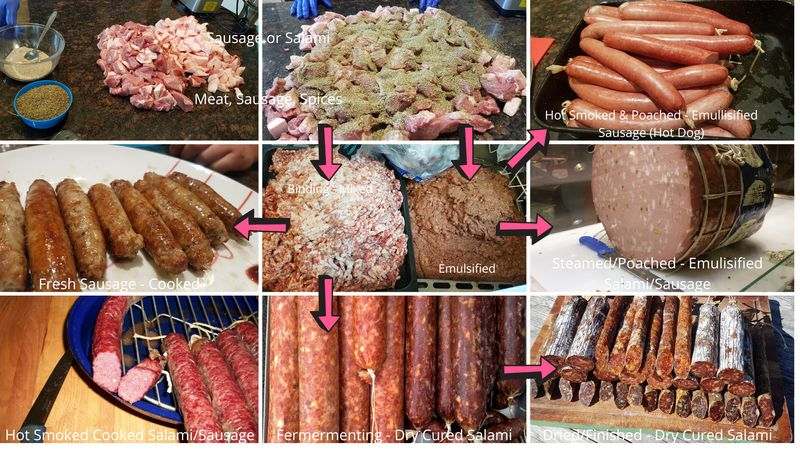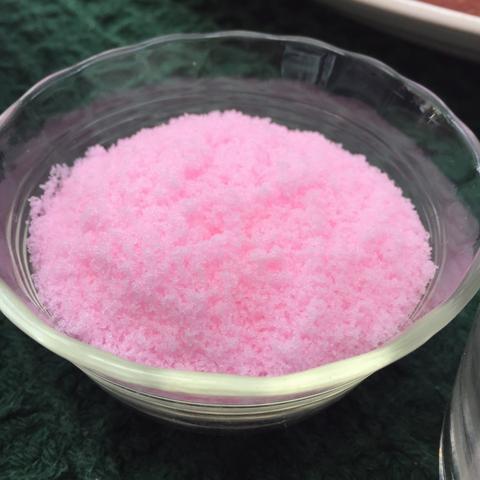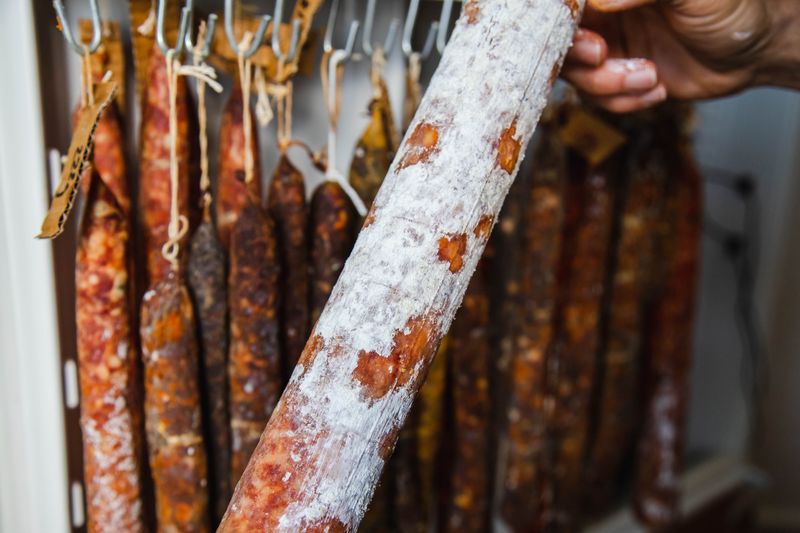You can very definitely make sausages without nitrites or nitrates, the decision is always yours, especially if you are making them at home.
The reason why I decided to write this article was, because I have been reading, studying and making all the different types of sausages you come across in the world over the last 25 years. I thought it would be useful to share some of my discoveries.
Nowadays when many people write or record videos about sausages or curing topics, sometimes, they don’t quite have the experience to explain things and detail accurately, I’ve noticed.
Sausages vary a lot, some are raw or to be grilled or cooked, some are cooked/hot smoked at the same time. Lastly some are cured and then dried over several months (sausage salami).
Firstly sausage can mean a different product to different nationalities around our one of a kind planet, also.
In Poland and other Eastern European countries, sausage is often used for all minced meat in a casing (natural or synthetic) to hold in meat and spices, including fresh/raw sausage for grilling; so is also ‘Ready to Eat’ type of sausage, as well as, dry cured salami which is fermented and dried.

Whilst sausage in Scotland could refer to a meat patty, like the one you get in a burger.
Instead of saying a simple yes or no to whether you need nitrates/nitrites, I will explain which type of sausage Nitrites/Nitrates are relevant to. Which is very important in regards to answering the main question.
Can you Make Sausage Without Nitrites or Nitrates
Yes, its a personal choice and depends on the type of sausage. For example, a cured sausage which is a hot smoked or a cured sausage salami that is dried could have nitrates/nitrites. The choice is your own, nitrates/nitrites are added for taste, color and prevention of botulism.
Nitrates and Nitrites do not add shelf life, which I’ve read online in a comment.
I’ve written alot about these substances, and how they exist in our bodies and in many poor quality cured processed meats in supermarkets.
Processed meats (I’ve also written an article on charcuterie and processed meat, since this derives confusion) such as deli ham, hot dogs (as type of sausage) and bologna will all very likely have nitrates/nitrites.
Dark green vegetables we consume also have nitrites.
The main 2 types of nitrites for cured sausage are for under 30 days to finish (Number 1) or over 30 days (Number 2). This is for many Western countries, however, there are other variations and mixtures of salt/nitrites I’ve come across.
Basically ‘under 30 day types’ of popular nitrite additive are called pink curing salt number 1 (it has many other names).
For ‘over 30 day types’ cured meat products, Number 2 is used which has nitrates and nitrites. The nitrates breakdown and turn into nitrites overtime. The way I like to think of this it’s like a time released reaction.

You can read about Pink Curing Salt, I wrote about it here.
If you are using a natural derivative which has become quite common in the Western World such as beetroot or celery powder – these are still forms of nitrites.
Question you have to ask yourself is whether you are going to use nitrites or not – but that’s why you are here!
Why Nitrates/Nitrites are Added to Certain Sausages
- Color (reaction with the meat, can occur naturally, too)
- Preventing Botulism
- Possible taste Reaction to Meat/Cure
It is a very common commercial process for cured meats as a safety precaution to use nitrites.
You know bacon is often pink when you buy it raw and uncooked at a Western supermarket. The reason the bacon and the smoked ham are pink is because of the nitrites that been added to the meat.
Now you can get some pinkness from certain salts that actually have a natural form of nitrites sometimes known as saltpetre or potassium nitrate. Generally, if you don’t put nitrites in bacon or ham, they will have a gray color rather than a pink color.
In terms of marketing meat, the industry embraced the idea of nitrite in cured meats since it is more appealing.
In the same way that heirloom carrots (the original type of carrots) had different colors. However, orange became a more marketable color for carrots!.
Pros and Cons: Making Sausage Without Nitrates
Pros:
- Protects meat from Botulism
- Makes Meat like Pork More Pink and More Appealing Visually
- May have a mild flavor effect
Cons:
- Cooked at High temperature, may turn into a Carcinogen
- Must be handled with care, if not used in VERY small dosages
Tips for No Nitrite Sausage Crafting

Hygiene
One of the most important aspects of crafting sausages or cured meat is that you are working in very clean and, ideally, very cold environments to minimize the chance of bacteria that is unwanted.
Bacteria as the temperature increases, exponentially grows.
For many sausage recipes this is why grinding and mincing meat is done at barely above freezing level.
Quality of Meat
This is something that gets overlooked for homemade charcuterie when folks make sausages.
It’s very tempting to buy meat on special at a supermarket, because you want to use it to make sausages..
However, meat that has existing bacteria that you buy specially for longer-term cured salami sausage recipes could lead to unwanted outcomes which I’ve experienced over the years, as well.
When an animal is slaughtered it should obviously also be chilled as quickly as possible to minimize bacteria, this sometimes is a challenge especially when harvesting wild meat in warmer months.
It’s on special for a reason! Sometime, because its been sitting on the shelf for too long. If meat sits in its own juices, the unwanted bacteria will grow (using racks for meat in the fridge is a wise choice!)
Temperature of Meat
As mentioned above the key component of handling raw meat is keeping it at the fridge temperature as long as possible, like in most commercial sausage and salami making facilities that I have visited.
In there giant rooms are kept at the chilled fridge temperature during the spicing, grinding, mixing and stuffing phases
Precise and Accurate Process and Recipe
Lots of time people have contacted me about a family hand down recipe for some obscure cured meats, it’s a little bit unsettling to see some of the processes that people seem to follow.
I’m not here to judge – some of these could be amazing! BUT I like to keep to certain levels of food science and safe outcomes – NOT unwanted outcomes!
What I’m trying to say is, be cautious about recipes that turn up on social media or are handed to you on a handwritten piece of paper.
Confusion of Uncured ‘Cured’ Products in America
The labeling regulators in America made some interesting decisions, using natural derivatives such as the mentioned beetroot or celery powder. It means that a salt cured and smoked piece of bacon sold can have natural nitrites and it and be labeled as “uncured”.
Leading to a very interesting level of confusion, because people are a bit gun shy about consuming nitrates or nitrites.
My opinion is, that many are scared because of overindulgence of cured/processed poor quality meat which is quite common in some Western countries pointing to their diets being unbalanced.
Curing in Some Definitions Includes Nitrites
For me, curing meat involves using salt to cure the meat. It isn’t compulsory to use Nitrites in the ‘cure’.
Some confusion online and with regulators is the use of Nitrites when curing of meat, which had lead to mis-interpretation in my eyes.
Summary
It’s really up to you, it’s your personal decision
For a raw sausage that can be cooked on a grill later down the track, there really is no point in using nitrates or any type of pink curing salt, instacure or prague powder, whatever the name of the nitrite is.
For the minimal quantity of 0.25% to every kilogram of meat which is used for a dry cure quality homemade recipe is considered the safe level. That’s an incredibly minimal amount, compared to several decades ago, When there wasn’t a volume regulatory aspect so much and commercially processed cured meats.
Here are some more links to what I’ve written about pink curing salt – hopefully, these resources are useful.

Tom Mueller
For decades, immersed in studying, working, learning, and teaching the craft of meat curing, sharing the passion and showcasing the world of charcuterie and smoked meat. Read More
